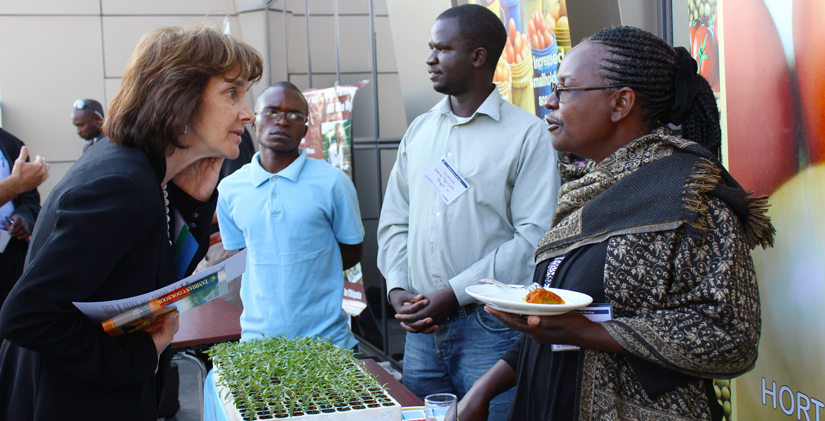
In June, representatives from each of the Horticulture Innovation Lab’s current projects gathered in Lusaka, Zambia, for the program’s annual meeting. The three-day meeting started with a workday, then grew into a local conference, and ended with a tour of local agriculture.
Workday for current partners
The first day of the three-day meeting was focused on learning about the program’s new portfolio of projects and finding possible synergies between them. Beth Mitcham, director of the Horticulture Innovation Lab, discussed the broad goals of the projects new phase, and John Bowman of USAID updated the group about changes at the Bureau of Food Security, including upcoming changes to scientific peer review policies and sub-award processes.
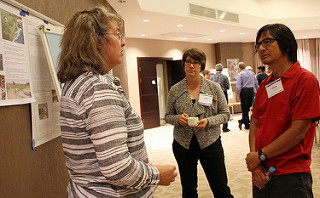
Principal investigators from each of the Horticulture Innovation Lab’s six current projects and two Regional Centers shared posters and discussion with rotating small groups. Later, the teams networked to discuss ways they could work together and exchange expertise.
Janelle Larson, Leif Jensen and Arie Sanders of Penn State and Zamorano universities walked the group through a workshop about designing gender-sensitive agricultural research (see 9 tips for incorporating gender into a research project for highlights). Rangaswamy Muniappan, director of the Integrated Pest Management Innovation Lab, also gave a presentation about the program’s IPM packages for horticultural crops and commented on areas of overlapping interest between the two programs.
“I think we all have a better appreciation for the portfolio of projects that we have started and are moving forward,” Mitcham told the group at the end of the day. “I applaud you for all the synergies you discussed this afternoon, and we’ll have to check back in at next year’s meeting to see what has actually developed.”
Conference about Zambian horticulture
On the second day of the meeting, the group swelled to 90 participants with local leaders of horticulture and development projects joining for a conference focused on local innovations and the future of horticulture in Zambia.
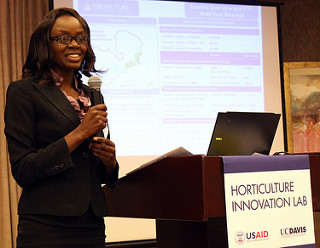
In the morning session, Olive Kaluwa from USAID/Zambia presented about Feed the Future strategies and progress in Zambia, where programs trained 198,900 farmers in 2014. Mitcham of the Horticulture Innovation Lab discussed how horticulture is tied to improving nutrition, increasing income and diversifying farmer risks. She also discussed some of the challenges facing investments in horticultural development, including the perishability of fresh produce, the diversity of crops, the fact that it is knowledge-intensive, and that some people believe it is too difficult an endeavor for smallholder farmers.
Samuel Bwalya of the United Nations Development Programme in Ethiopia discussed the creation of an agricultural transformation agency in Ethiopia run by a government ministry and focused exclusively on innovation for smallholder farmer households.
Lottie Senkwe of iDE led a workshop about farm business advisers. The advisors are independent entrepreneurs trained in a variety of skills who can support smallholders in the agricultural value chain — including working with micro-finance institutions, connecting with salespeople for equipment and inputs, providing agronomic knowledge and training, aggregating crops, and marketing crops. The farm business advisors are trained by iDE and their partners, eventually earning commissions for deals they make while helping farmers succeed. “Their motivations comes entirely from helping the farmer,” Senkwe said. “What are the real needs of the farmers? … What we’ve discovered on the Zambian market is that the need which the farmer is willing to pay for directly relates to the money the farmer can make. It must have a direct relationship.”
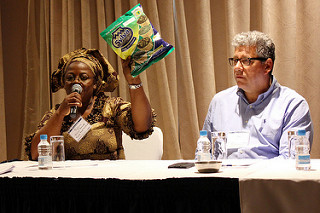
An afternoon panel focused on future opportunities for horticulture was also moderated by Bwalya. Each of the four panelists has become involved, one way or another, in providing some type of extension or training to farmers, with market drivers.
- Sylvia Banda kicked off the panel with a discussion about her company Sylva Foods and its work with African vegetables and value-added food products, including moringa.
- Dale Lewis of Community Markets for Conservation (COMACO) discussed how they’ve developed a loyal consumer market for products grown by smallholder farmers who earn premium prices for using conservation practices.
- Mark Stokes of MRI Syngenta discussed how the company is focused on serving small-scale vegetable farmers, by packaging products and providing services and training for farmers to access integrated crop solutions, particularly for urban and peri-urban vegetable farmers.
- Jim Simon of Rutgers University focused on the importance of considering horticulture as a business instead of just a livelihood in his projects and translating scientific findings into concepts that work.
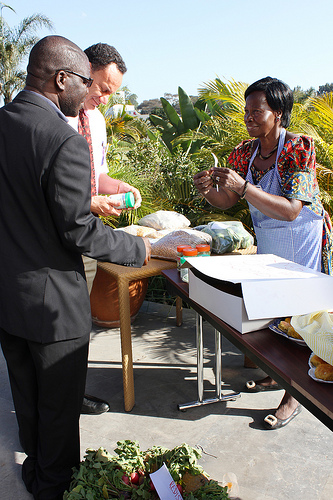
Each of the panelists commented on additional opportunities they are pursuing within Zambia, and potential for expanding export to some of the Zambia’s eight neighboring countries.
The afternoon ended with a reception and expo of displays from organizations. Carole Mfune shared “It’s Wild” brand products from COMACO, including dried vegetables and soup mixes. Carl Jensen represented the start-up Zasaka, which provides extension and technology packages to farmers. Emily Burrows from Catholic Relief Services shared nutrition education materials from the Mawa project. A team from MRI Syngenta displayed new seed packaging and a hip water pump. Teams from ASNAPP and the CASH project shared agricultural outreach materials and samples of value-added products made by local farmers.
Tour of horticulture near Lusaka
A tour the following day sent groups through three agricultural sites around the capital city. One site was at the home of Melanie Chipungu, a leader of the Mitengo Women’s group, who brought together members of the group to discuss how the association works together and showed us her farm, including a moringa nursery, a solar dryer, a mushroom house, and a variety of crops and value-added products.
Another site visited was the home of the Agribusiness Incubation Trust (AgBIT), where CEO Brian Mwanamambo presented about the African Agribusiness Incubator Network and how AgBIT aims to help horticultural farmers through clusters of services. A third site was with the Lilayi Cooperative, with a group that has worked with ASNAPP to grow African indigenous vegetables and a variety of other vegetables using a greenhouse and other technologies.
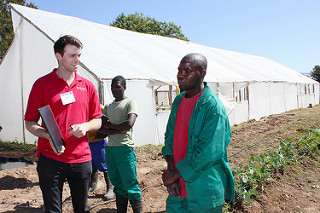
If you attended the meeting, what were some of the things you learned? What did you add to your to-do list, and who did you add to your network of contacts? Feel free to add your comments below or browse the presentations and photos from the event for more information.
